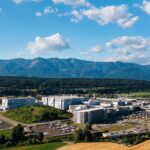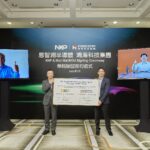ASIA ELECTRONICS INDUSTRYYOUR WINDOW TO SMART MANUFACTURING
TSMC Eyes New €10B Chip Plant in Germany
Taiwanese semiconductor manufacturer TSMC plans to construct a massive new production facility in the eastern German city of Dresden. Accordingly, the volume of the Dresden plant may reach at least €10 billion.
The new plant for 300mm semiconductors will rise in the heart of the electronics hub often known as “Silicon Saxony”. The German government and the European Union (EU), subject to approval, will reportedly offer major financial support for the project.
A statement from the Germany Trade & Invest (GTAI) said the planned factory will have a monthly capacity of 40,000 wafers. On top of this, construction will start in the second half of 2024, with the facility to go operational by the end of 2027.
Meanwhile, Bosch, Infineon and NXP are also participating in the project, with ten percent stake each.

Waves of Expansion
The plant’s products will primarily serve the European and German automotive and industrial sectors, said TSMC. The project follows upon similar expansions by German chipmaker Infineon in Dresden and US giant Intel in Magdeburg, also in eastern Germany.
“With TSMC’s investment, a further global player in the semiconductor industry is coming to Germany,” said Minister for Economic Affairs and Climate Action Robert Habeck in a statement. “It shows that Germany is an attractive, competitive location, particularly for key technologies like microelectronics.”
Germany Trade & Invest (GTAI), the German government agency for international business promotion, works in the initial consultations that led to the TSMC expansion.
Meanwhile, GTAI CEO Robert Hermann said, “Among the many advantages of Germany as a chipmaking location are its European-leading automotive industry and the availability of clean forms of energy, which will become increasingly important to international companies in the years to come.”
In addition, Hermann said, “This new expansion is a fantastic contribution to Silicon Saxony and the German economy as a whole. It will surely stimulate further opportunities for international businesses in Europe’s largest economy.”




